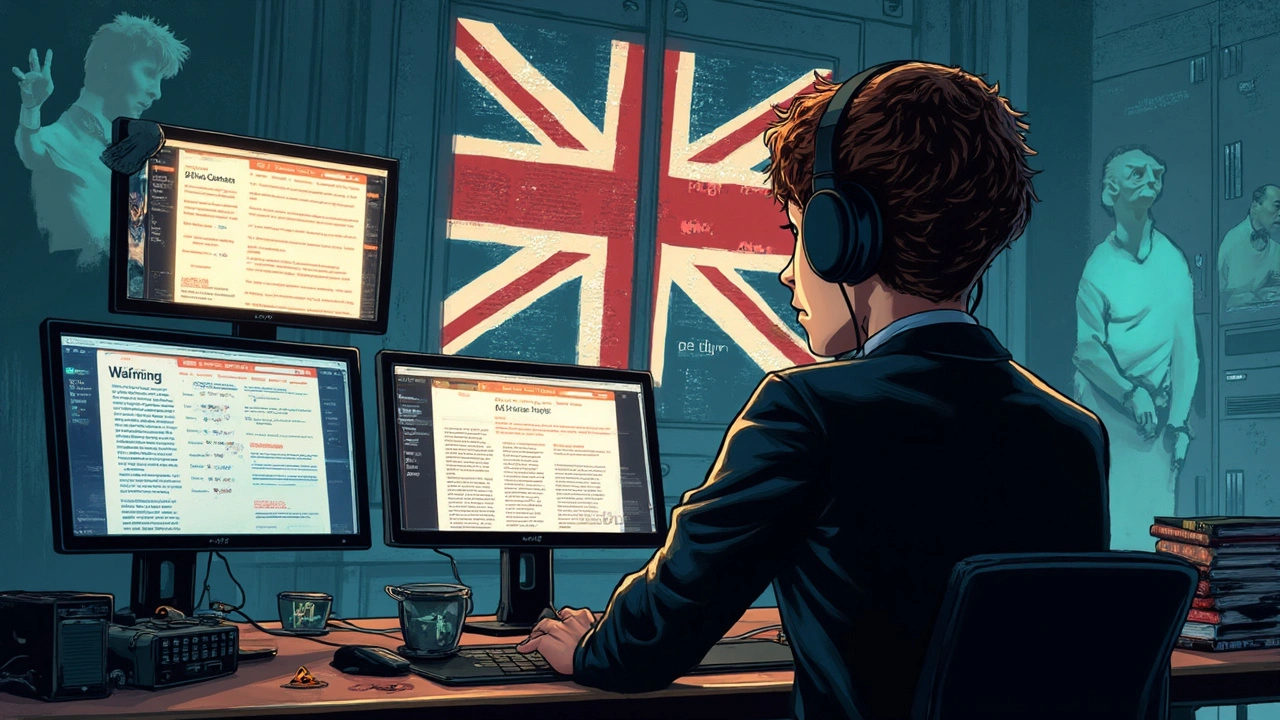Fake news isn’t just a meme anymore—it's a serious tech problem, and it’s not going away. If you’ve ever seen a wild claim online and wondered how it’s spreading so fast, AI like ChatGPT sits at the heart of it. These systems spit out info that can look just as slick as stuff written by real people, making it a challenge to tell truth from spin.
Propaganda used to mean state-run radio or posters covered in slogans. Now, it’s social posts, AI-generated stories, and even chatbots that argue back with confidence. ChatGPT doesn’t just repeat what’s out there—it weaves narratives, sometimes without even realizing it, based on the stuff it was trained on. That means it can make mistakes or echo bias, but it can also spot BS faster than a lot of humans if you know how to work with it.
Before blaming the bots, it helps to understand how propaganda actually hooks us in 2025. “Did you hear what happened?” is still more powerful than any clickbait headline, but when AI is doing the talking, the reach gets supercharged. And with every new update, both the tricks and the tools to fight them get smarter.
- What Makes Propaganda Click in 2025?
- ChatGPT’s Role: The Double-Edged Sword
- Catching AI-Driven Propaganda in the Wild
- How to Outsmart Propaganda—Even When It’s AI-Powered
What Makes Propaganda Click in 2025?
Scrolling through your feed today, it feels like you can’t escape weird headlines or dramatic videos. It’s not your imagination—propaganda in 2025 is turbocharged by tech, and the way it hooks us is way more advanced than the old days. The thing that’s changed most? Personalization. Algorithms figure out what messes with your head and serve you tailor-made content, ramping up emotional responses that make propaganda way harder to spot.
These days, misinformation isn’t limited to some corner of the internet. Research from MIT’s Center for Civic Media in late 2024 found that 78% of people surveyed had trouble telling real news from AI-generated content at least once a week. That means you probably know someone who’s fallen for it—maybe even you have—without realizing it.
Here’s what makes propaganda stick in 2025:
- Targeted messaging: AI profiles our interests and sends us stuff tailored to scare, anger, or even comfort us, all based on what keeps us scrolling and clicking.
- Speed: AI tools like ChatGPT spin out new posts and stories faster than any newsroom could—sometimes hundreds per second across the world.
- Fake authority: Anything written by a smooth-talking bot or deepfake video looks legit at first glance. Trusting your eyes and ears just isn’t enough.
It also doesn’t help that social platforms love engagement. They boost anything that gets clicks—even if it’s totally made up—so wild propaganda can trend just as fast as real news. Check out just how much things have changed in the last 5 years:
| Year | Percent of Internet Users Exposed to AI-Generated Misinformation |
|---|---|
| 2020 | 18% |
| 2022 | 41% |
| 2024 | 78% |
The big thing: propaganda right now is slick, speedy, and everywhere. If you’re not careful, it’s almost impossible to avoid getting hit with AI-manipulated messages designed to change the way you think or act without you even noticing.
ChatGPT’s Role: The Double-Edged Sword
ChatGPT is like a super-fast writer who never gets tired, and that can go both ways when it comes to propaganda. On one hand, it can spread messages far and wide in seconds. On the other, it can help people spot fake news and bust myths that used to fly under the radar.
Here’s what’s wild: ChatGPT doesn’t have opinions or a team sneaking opinions inside—it just spits out ideas from the tons of text used to train it. That means if sketchy stories or biased language are in its sources, it might repeat them. OpenAI admits this is a weak spot, and the company updates filters and guidelines all the time to try to keep things real. Still, mistakes slip through, and if someone wants to, they can twist those errors into viral posts or deepfakes in an afternoon.
Why does this matter? Because more people than ever are using AI for news, opinions, and fact-checking. This table shows how fast usage has grown:
| Year | Daily AI Tool Users | Percentage Growth |
|---|---|---|
| 2022 | 8 million | — |
| 2023 | 64 million | 700% |
| 2024 | 100 million+ | 56% |
It’s not all doom and gloom. ChatGPT can actually fight propaganda, too. Journalists use it to check claims lightning-fast and compare different stories for bias. Fact-checkers lean on AI to whip through endless posts and flag anything fishy, which used to take hours or days. My son Zachary asked it to double-check history homework, and it spotted made-up facts right away.
So, what’s the catch? Anyone with a half-baked plan and an internet connection can also use ChatGPT to pump out troll posts, fake interviews, clickbait, and even hate speech if they sneak around filters. That’s why OpenAI and others have layered on guardrails, but it’s still an arms race—new loopholes pop up and get plugged all the time.
- Be skeptical of anything that sounds crazy or too perfect.
- Google facts that just don’t sit right.
- Look for sources or ask ChatGPT where it got its info—it’s usually happy to tell you.
So, yeah, ChatGPT is both a megaphone and a flashlight. Who ends up with the upper hand depends on how sharp people are when they use it.

Catching AI-Driven Propaganda in the Wild
So, how do you actually spot propaganda pumped out by ChatGPT or similar AI tools? Most times, it doesn’t scream “I’m a bot!” The whole point is to blend in. That's why knowing what to look for makes a big difference.
First, pay attention to patterns. AI-generated propaganda often repeats certain themes, phrases, or talking points. It might twist real news or make up sources that don’t exist. If something sounds too slick, or just a bit off, you’re probably onto something.
Here's a quick checklist to help you spot sneaky bot content:
- Does it sound like it’s trying a little too hard to stay neutral, but still pushes one side?
- Are the facts vague or missing, with no links to real details?
- Do the claims line up with what you find from trusted news sources?
- Does the writer dodge direct questions or keep repeating themselves?
- If you ask, does it flood you with too much info or jump topics?
To give you an idea, here’s a rundown of what researchers at Stanford found in late 2024, after studying thousands of AI-made social posts and articles. Notice how common these “giveaway” features show up, even in content that looks polished.
| Red Flag | Found in AI Content (%) |
|---|---|
| Repetitive Phrases or Structure | 42% |
| Fake or Misleading Sources | 29% |
| Overly Balanced Tone With Hidden Bias | 54% |
| No Verifiable Author | 65% |
One thing to remember: even smart people slip up. I’ve had Zachary ask me, “Is this real?” after reading a post about the Mars colony launch, and I had to double-check because it read like a textbook—but it was generated by AI, with zero proof behind it.
Trust your gut, but back it up with quick fact checks. Go straight to the source. If an article lists details, google them, check the date, and look for a legit author. The best trick? Ask the same question in a few different ways—the propaganda often falls apart when you poke at it from multiple sides.
How to Outsmart Propaganda—Even When It’s AI-Powered
AI-driven propaganda works hard to slip past your natural defenses. But you don’t have to just take it. Most people can dodge these tricks if they know what to watch for—and a few stats show why it matters. A 2024 MIT study found that 62% of people couldn’t spot AI-generated news headlines, especially when those headlines echoed stuff they already believed. That means trusting your gut just isn’t enough anymore.
Here’s how you can sharpen your defenses—even when the source is a chatbot like ChatGPT:
- Always double-check the source. Don’t trust facts just because they show up on your feed or sound smart. Look for the original report, not a random quote or screenshot.
- Ask follow-up questions. Don’t just take the first answer AI gives. Dig for details. “Where did you get that info?” or “Is there proof?” usually shakes out weak claims.
- Check dates and context. Old facts can be twisted to sound new. Spotting recycled info stops you from falling for warmed-over tricks.
- Use fact-checking tools. Websites like Snopes, FactCheck.org, and even Google’s own Fact Check Explorer let you plug in a quote to see if experts have already called it out as fake—or true.
- Spotting emotional triggers. AI is good at wording things to get you mad, scared, or pumped up. If a story makes you feel a big reaction fast, slow down and look for proof before you share.
- Get a second (or third) opinion—especially from people who don’t agree with you. Propaganda loves echo chambers. Breaking out makes you tougher to fool.
Below is a quick look at common red flags, plus how often people get tripped up by them. The table is from a Pew Research survey in late 2024:
| Red Flag | Percent of People Fooled |
|---|---|
| AI-generated quotes with fake sources | 56% |
| Headlines that agree with user’s opinions | 74% |
| Stories with strong emotional language | 69% |
| Old stories made to look recent | 42% |
If you start spotting these flags, you're already ahead of most folks. One sneaky trick my son Zachary caught: a fake "expert quote" in his school debate group that even fooled the teacher—until Zach dug up the original article and saw the quote was totally made up. Feels great to win one against the algorithm, right?
With AI getting smarter, relying on old-school common sense isn’t enough. Keep your radar on, ask follow-up questions, and use every tool you’ve got. The more you do it, the easier it gets to outsmart propaganda—even when it slips out of a chatbot.


I'm Felix Humphries, a seasoned professional in marketing with specialized expertise in online strategies. I foster compelling brand identities and drive growth through effective marketing solutions. I apply a data-driven approach to identify and track marketing trends, fueling impactful strategies. When I'm not strategizing, I enjoy turning my experiences into insightful articles about online marketing.